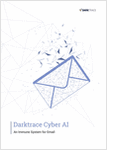 |
Email and collaboration platforms represent the connective tissue of any digital business. Information is shared, plans are hatched, and alliances are formed in the digital realm of written correspondence. Yet as a human-driven medium, email will always be fueled by a pervasive assumption of trust that stands as the ‘weakest link’ in an organization’s security strategy.
While this assumption of trust is critical for collaboration and growth, it means that email more than any other area of the business will remain structurally resistant to the modern-day spirit of ‘zero trust’, and it is therefore hardly surprising that 94% of cyber-threats still originate in email.
To minimize the influence of human fallibility in this area, the industry has generally come around to the idea that technology must be relied upon to identify malicious emails that even the most discerning, well-trained employees fail to spot. However, until recently, traditional defenses have struggled to keep pace with innovations in the cyber-threat landscape.
Spear phishing, impersonation attacks, and account takeovers in particular remain fruitful avenues of attack for cyber-criminals aiming to infiltrate an organization with ease. Targeted email attacks of this kind, together with the limitations of traditional defenses, remain a burning challenge for organizations with even the most layered and mature security strategies.
Peter Firstbrook, VP Analyst at Gartner, summarizes the market dynamic well: “Common controls, such as standard, reputation-based, anti-spam, and signature-based antivirus, are fine for widespread attacks and scam campaigns, but they’re not good enough for protection against more targeted, sophisticated, and advanced attacks. More than ever, modern email security requires innovation and a shift in mindset to combat the evolving threat landscape.”
Request Free! |